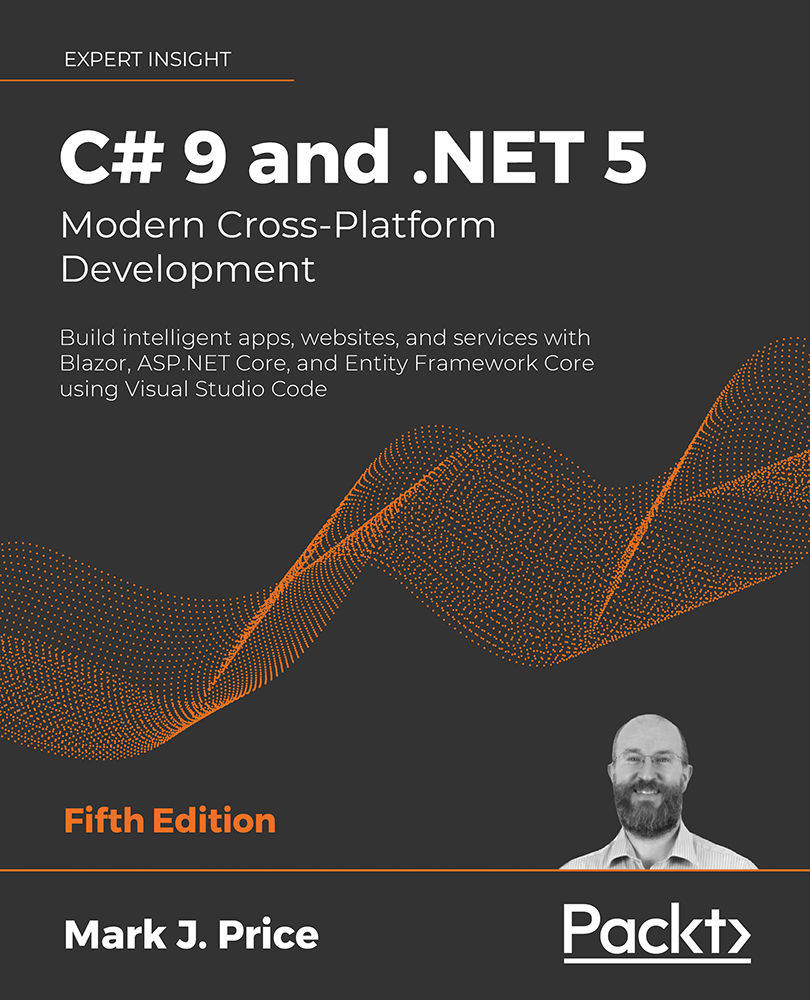-
Book Overview & Buying

-
Table Of Contents

C# 9 and .NET 5 – Modern Cross-Platform Development - Fifth Edition
By :

C# 9 and .NET 5 – Modern Cross-Platform Development
By:
Overview of this book
In C# 9 and .NET 5 – Modern Cross-Platform Development, Fifth Edition, expert teacher Mark J. Price gives you everything you need to start programming C# applications.
This latest edition uses the popular Visual Studio Code editor to work across all major operating systems. It is fully updated and expanded with a new chapter on the Microsoft Blazor framework.
The book’s first part teaches the fundamentals of C#, including object-oriented programming and new C# 9 features such as top-level programs, target-typed new object instantiation, and immutable types using the record keyword. Part 2 covers the .NET APIs, for performing tasks like managing and querying data, monitoring and improving performance, and working with the file system, async streams, serialization, and encryption. Part 3 provides examples of cross-platform apps you can build and deploy, such as websites and services using ASP.NET Core or mobile apps using Xamarin.Forms. The best type of application for learning the C# language constructs and many of the .NET libraries is one that does not distract with unnecessary application code. For that reason, the C# and .NET topics covered in Chapters 1 to 13 feature console applications. In Chapters 14 to 20, having mastered the basics of the language and libraries, you will build practical applications using ASP.NET Core, Model-View-Controller (MVC), and Blazor.
By the end of the book, you will have acquired the understanding and skills you need to use C# 9 and .NET 5 to create websites, services, and mobile apps.
Table of Contents (23 chapters)
Hello, C#! Welcome, .NET!
 Free Chapter
Free Chapter
Speaking C#
Controlling Flow and Converting Types
Writing, Debugging, and Testing Functions
Building Your Own Types with Object-Oriented Programming
Implementing Interfaces and Inheriting Classes
Understanding and Packaging .NET Types
Working with Common .NET Types
Working with Files, Streams, and Serialization
Protecting Your Data and Applications
Working with Databases Using Entity Framework Core
Querying and Manipulating Data Using LINQ
Improving Performance and Scalability Using Multitasking
Introducing Practical Applications of C# and .NET
Building Websites Using ASP.NET Core Razor Pages
Building Websites Using the Model-View-Controller Pattern
Building Websites Using a Content Management System
Building and Consuming Web Services
Building Intelligent Apps Using Machine Learning
Building Web User Interfaces Using Blazor
Building Cross-Platform Mobile Apps
Index
